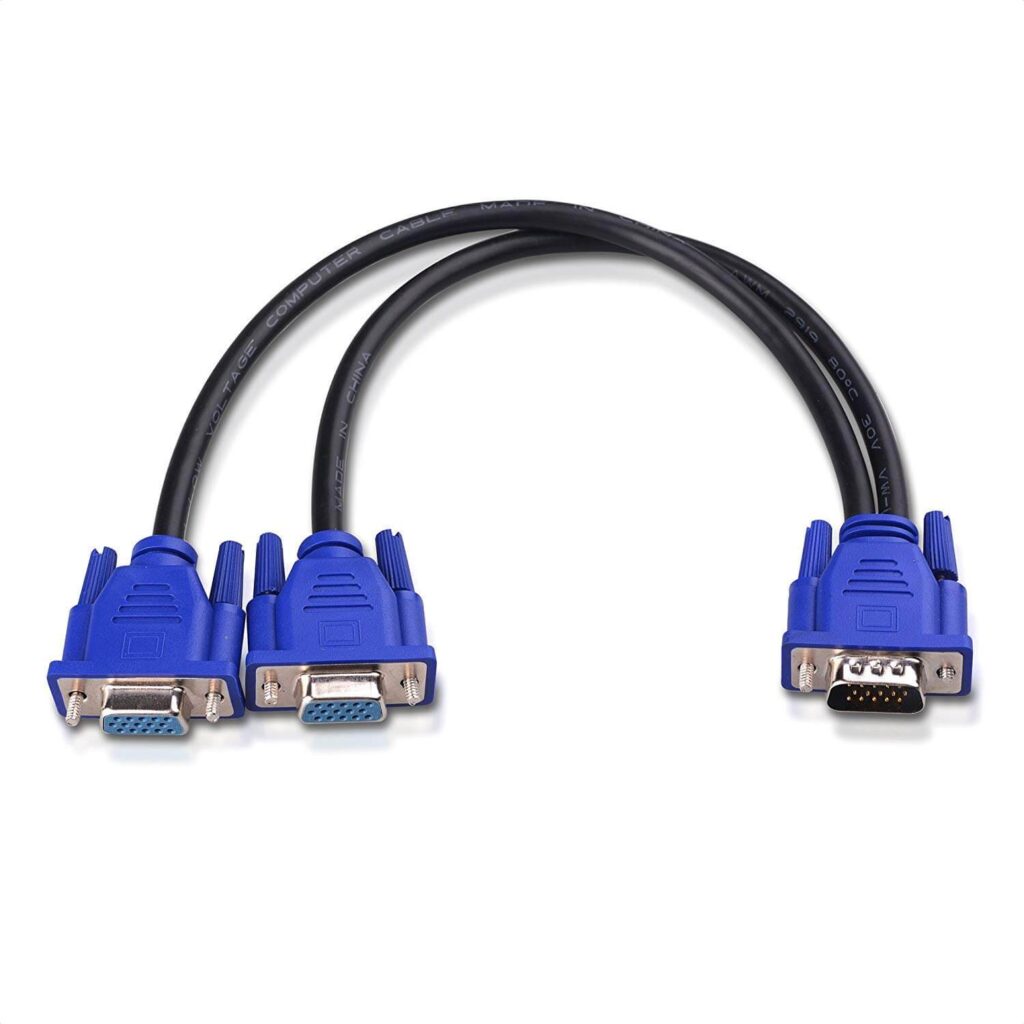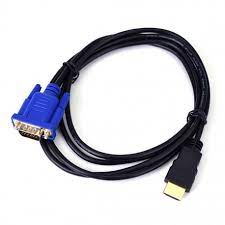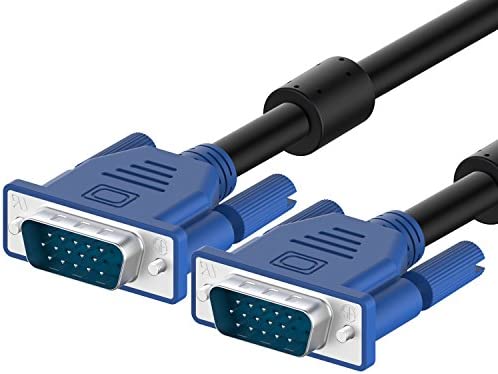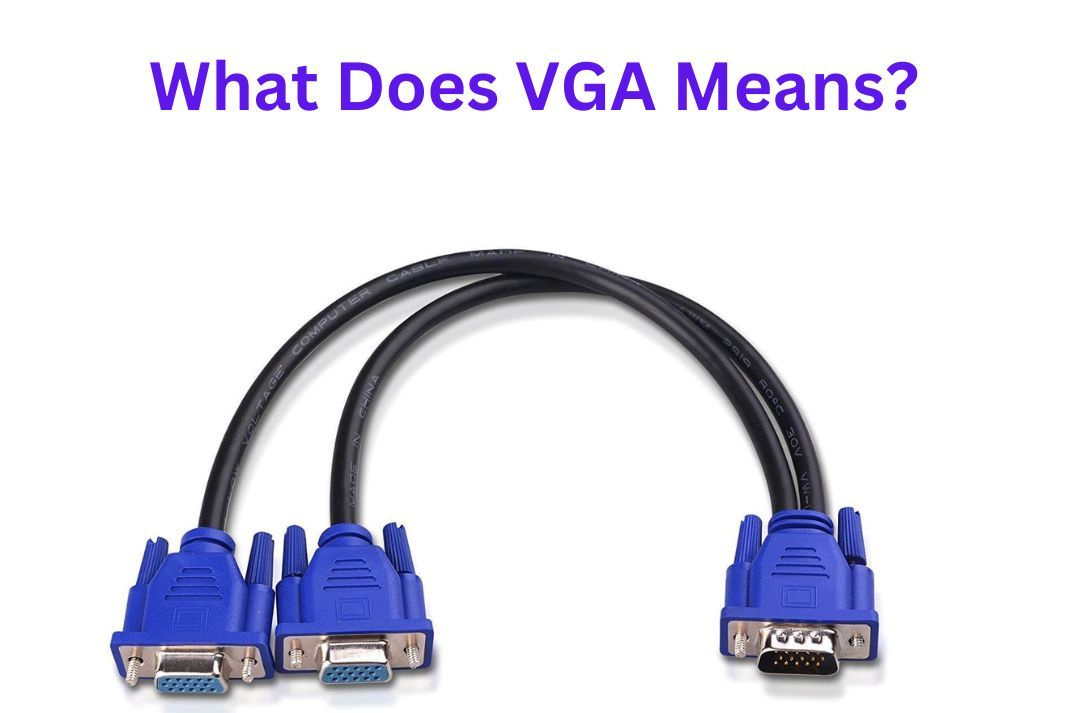VGA stands for Video Graphics Array and is a type of video connector that is used to connect devices such as computers, laptops, and gaming consoles to displays such as monitors and projectors. It has been here for a long time and in the modern world, it is being replaced by DVI and HDMI. However, VGA is still in use today. In this article, let’s find out more about this connection.
History

VGA (Video Graphics Array) was first introduced by IBM in 1987 as a part of their PS/2 line of PCs. The original VGA chipset or graphics card had the capability to display up to 16 colors at a resolution of 640×480 pixels, which was a significant advancement at the time. At a lower resolution of 320×200 pixels, VGA could display up to 256 colors. VGA also improved the rendering of text, particularly lowercase characters that dropped below the display line, such as the letter ‘g’.
Even though IBM and other manufacturers soon developed graphics cards that could display thousands to millions of colors, VGA remained a popular and widely supported standard for many years, as it was natively supported by all PCs and was the initial mode that operating systems loaded. For example, Microsoft Windows would load its opening splash screen in VGA color and also used it as a diagnostic “safe mode”, which provides a basic display while leaving graphics cards inactive during troubleshooting.
How VGA works
VGA is a video standard that supports a resolution of 640×480 pixels with a refresh rate of 60Hz, and a maximum of 16 colors displayed at a time. If the resolution is lowered to 320×200, the number of colors shown increases to 256. VGA uses analog signals to transmit the image to the display device, which means the image quality is lower compared to digital standards and it can only support lower resolutions.
VGA works by transmitting analog signals, which are signals that vary continuously, as opposed to digital signals. The VGA signal is composed of three separate signals – red, green and blue – which are sent to the display device where they are combined to create the final image. VGA cables have 15 pins, with each pin dedicated to one of the three color signals, as well as other signals such as horizontal and vertical sync.
VGA vs Other Video Connections
HDMI, DVI, and DisplayPort are all digital video connections that have replaced VGA as the preferred standard for connecting PCs to monitors. HDMI and DisplayPort both support higher resolutions and refresh rates than VGA and also support audio transmission. DVI does not support audio but does support higher resolutions.
VGA is still used in some older computers and displays, but it is becoming increasingly rare. Many newer computers and laptops no longer have VGA ports, and many newer displays only have HDMI or DisplayPort inputs.
VGA and HDMI convertors

You can connect a computer with a VGA output to a display device with an HDMI input, such as a monitor or TV, using a VGA to HDMI converter. This is helpful if you wish to utilise an HDMI monitor or TV as the display but your computer only has a VGA port on the video card.
Since VGA doesn’t transport audio, some VGA to HDMI converters even come with an inbuilt USB cable that does, allowing you to play sounds through a display with embedded speakers, such an HDMI TV.
A video card with HDMI output can be connected to a display device with a VGA input, such as an outdated monitor or TV, using an HDMI to VGA converter, on the other hand. When using a modern desktop or laptop to connect to an older display that lacks an HDMI input, this is helpful.
VGA and DVI Converters

A video card with a DVI output can be connected to a display device with a VGA input, such as an older monitor or TV, using a DVI to VGA converter. These converters are typically DVI male to VGA female, which means the DVI end plugs directly into the video card’s DVI port and the VGA end is utilised with a male to male VGA cable to connect the converter to the display device. These converters are quite accessible and affordable.
A VGA to DVI converter, on the other hand, is a gadget that enables you to attach a video card with a VGA output to a display device with a DVI input, like a more recent monitor or TV. Due to the low demand for these converters, they are more expensive and more difficult to find. This kind of converter is necessary since the signal is being converted from analogue to digital, and while DVI transmits both analogue and digital signals, VGA only carries analogue signals. The analogue impulses are converted to digital signals via the VGA to DVI converter.
Conclusion
In summary, VGA is an older video standard that has been largely replaced by digital standards, but it is still in use in older technology. Its main advantage is its wide compatibility with older computers and display devices, but it has limited resolution and refresh rate compared to digital connections. It’s essential to understand the type of connection required to connect your devices and use the appropriate converters when needed.




































